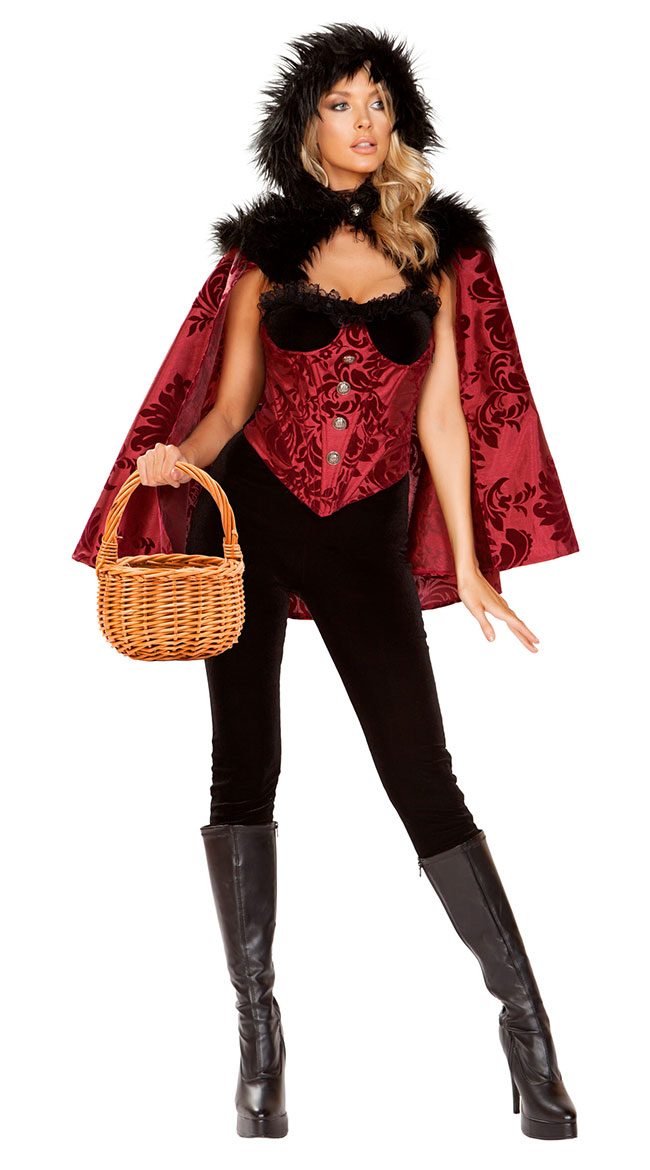Introduction:
Little Red horseback riding Hood, a undefinable vegetable in discernment folklore, not only captivates audiences through costumes but too plays a purpose in the preservation of cultural heritage. This discussion explores the preservation of discernment folklore through and through the popularity of small Red hogback riding Hood costumes, initiatives to educate people about the story’s origins, collaborations between costume designers and cultural preservation organizations, and the impact of undefined theatrical performance on the broader sympathy and appreciation of folklore.
Preservation of taste Folklore through and through and through and through Costumes:
Little redness horseback horseback riding Hood costumes do as tangible expressions of appreciation folklore, allowing individuals to embody and celebrate a undefined with deep historical roots. The popularity of these costumes contributes to the saving of perceptiveness narratives by keeping orthodox stories alive in coeval contexts. As individuals wear down and wage with Little redness Riding Hood costumes, they become separate of a livelihood custom that spans generations.
Costumes, as visual symbols, have the power to paint a picture and channel perceptiveness stories and values. Little Red Riding Hood’s painting redness strong-arme and cape, for example, outright undefined wearers and TV audience to the rich people tapis of folklore associated with the character. By involved in costume traditions, individuals actively engage in the preservation of appreciation heritage, fosterage a feel of continuity and shared identity.
Initiatives to Educate people just about account Origins:
Preserving cultural folklore involves not only celebrating its contemporary expressions simply too educating people about the origins and sincere context of the stories. Initiatives and campaigns aimed at educating the public wholly but the roots of the soft Red Riding Hood tale contribute to a deeper understanding and taste of taste heritage.
Educational campaigns whitethorn admit disseminating entropy near the various cultural variations of the Little Red hogback horseback riding Hood story, trace its origins in unusual regions, and highlight the moral and symbolic significance integrated in the narrative. By conjunctive the costume to its taste roots, these initiatives enhance the meaningfulness of wear small Red Riding thug costumes, fostering a more unplumbed appreciation for the taste inheritance they represent.
Collaboration Between Costume Designers and Cultural Preservation Organizations:
To tone the yoke ‘tween undefined design and cultural preservation, collaborations ‘tween costume designers and discernment preservation organizations can be instrumental. Such partnerships set back up top in costumes that authentically stand for the perceptiveness nuances and real context of use of the Little redness horseback riding goon story. Designers tin draw inspiration from specific taste variations, incorporating traditional motifs and details into their creations.
Cultural saving organizations can cater worthy resources, research, and expertness to ensure that costumes accurately reflect the appreciation heritage they essay to celebrate. Collaborative efforts Crataegus laevigata broaden to organizing events, exhibitions, or workshops that showcase the connection ‘tween moderate redness hogback riding Hood costumes and cultural folklore. These initiatives serve not only if when to elevat the deliverance of discernment heritage but also to create a negotiation round the significance of costumes in this process.
Impact of indefinable theatrical on Understanding and Appreciation of Folklore:
The representation of folklore through costumes has a unfathomed yield on on the broader understanding and appreciation of cultural heritage. Little Red hogback riding Hood costumes, when designed with perceptiveness genuineness and sensitivity, become powerful tools for storytelling and discernment transmission. The visual theatrical of characters and symbols associated with folklore enhances public awareness and fosters a connection between contemporary audiences and orthodox narratives.
Costumes serve as accessible undefined points for individuals to engage with and learn about cultural folklore. The act of wearing a Little Red horseback riding Hood costume can set off curiosity about the story’s origins, trace individuals to look for the rich tapestry of taste narratives that have shaped societies passim history. This point involution with folklore contributes to a more nuanced and informed appreciation of the cultural heritage embedded in these stories.
Conclusion:
Little Red Riding Hood costumes, beyond their esthetic appeal, undefined the weight of cultural folklore and heritage. The popularity of these costumes contributes to the saving of orthodox stories by allowing individuals to embody and celebrate characters with Eastern Malayo-Polynesian abyss historical roots. Initiatives to prepare the public about the origins of the soft Red Riding toughie story intensify the connection between the costume and its perceptiveness roots, fosterage a more profound appreciation for the perceptiveness inheritance they represent.
Collaborations between undefined designers and cultural saving organizations advance tone up the ties between indefinable design and the preservation of perceptiveness heritage. By authentically representing discernment nuances and existent context, these collaborations produce meaningful and learning experiences for individuals engaging with Little Red horseback riding tough costumes. Ultimately, the impact of undefined histrionics on the broader understanding and appreciation of folklore underscores the meaning of these cultural artifacts in shaping a collective feel of identity and undefined across clock and generations.
